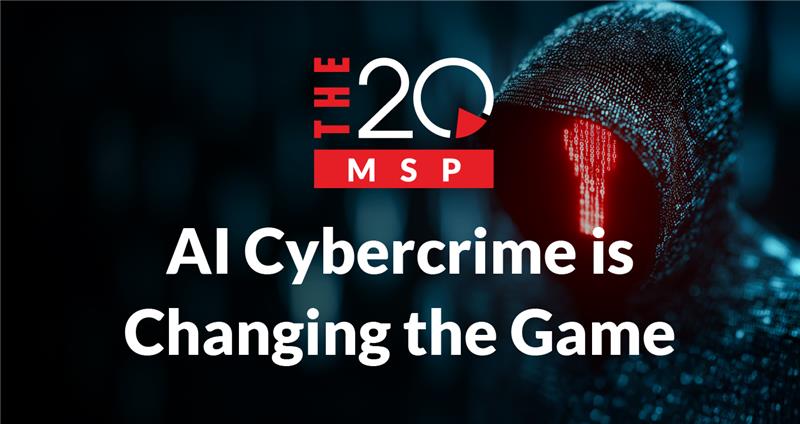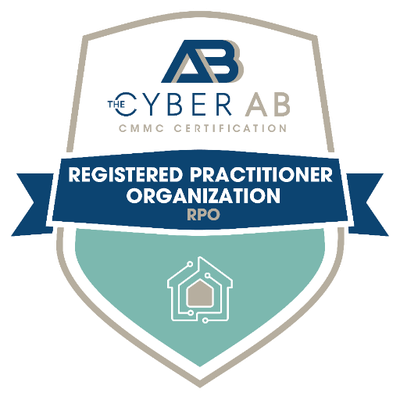
AI Cybercrime Is Changing the Game
It’s time to talk about the dark side of AI.
That’s right – AI cybercrime.
While AI can be an incredibly powerful tool for businesses, it can be just as powerful for cybercriminals.
Phishing scams. Deepfakes. Malware evasion. Password cracking. AI is being weaponized to make cybercrime a lot worse.
That’s why today, we’re diving into the seedy side of AI – but don’t worry, it’s not all gloom and doom. We’ll also show you how AI can fight back and help protect your business from these very threats.
Let’s get into it.
Artificial Intelligence – Real Danger
Cybercriminals have always been nefarious, persistent, and dangerous. And AI isn’t making things any better.
Since ChatGPT hit the scene in 2022, malicious phishing emails have skyrocketed by 1,265% according to cybersecurity firm SlashNext.
And phishing is just the beginning.
Here are just a few ways AI cybercrime is turning our AI nightmares into reality:
AI-Powered Phishing
We all get the gist of phishing by now – it’s when criminals try to steal your information through fake emails, social media posts, or messages.
AI makes writing these scams even easier, but the real power behind AI phishing lies in how it helps cybercriminals target their victims.
With AI-driven data gathering, scammers can tailor phishing attempts to individuals much more effectively. And it works – a report by Hoxhunt found that AI-generated phishing was 24% more effective than phishing attempts written by humans.
Deepfakes & Social Engineering
Phishing is one thing – deepfakes are another thing entirely.
A deepfake is when an AI impersonates someone through video, voice, or both. And they’re surprisingly good at it. Cybercriminals use deepfakes to fool unsuspecting victims into falling for cyberattacks.
This kind of AI cybercrime really works. For example, a finance worker was duped into transferring $25 million after a deepfake impersonated the company’s CFO during a video call.
These tools are only getting harder to spot, adding to the already overwhelming number of threats to watch for online.
Malware Upgraded
Malware is bad. AI cybercrime that uses malware is even worse. (Noticing a trend?)
Malware is far more dangerous than your typical virus. It can easily slip past security measures by mimicking legitimate user behavior, adapting its tactics in real time to avoid detection, and quickly finding vulnerabilities – ironically using the same methods security experts rely on to defend systems.
Cracking Passwords
Automated password cracking has been a thing for a long time, but a strong password can take literal years to crack. AI cybercrime is changing that.
By training on data breaches and massive password databases, AI can better predict the most common passwords used by specific individuals, industries, and roles.
Think your password is strong enough? Try this AI-powered testing tool by Security Hero to see how it holds up. And if you’d like tips on creating stronger passwords, check out our blog post here.
Scam Chatbots
The evolution of scam callers – AI chatbots take AI cybercrime to the next level by almost perfectly impersonating trusted sources like technical support on a known website. They might claim you’ve won a prize, offer advice, or pretend to be a match on a dating site.
Basically, if you’re chatting with someone you don’t know online, there’s a chance you’ve been connected with a scam chatbot.
Luckily, there are a few ways to catch one out:
- Strange wording: AI chatbots tend to make weird sentences. Maybe they repeat a word too much, abuse the em dash a little too often, or just don’t seem to make much sense at all. While AI is getting better, if you’re paying attention, you might catch it slipping up.
- Response times: If you’re chatting with someone and wondering how they’re typing so fast, there’s a chance they may not be typing at all. On the flip side, some AI bots bake in fake response times to look human, but if you notice those response times always follow the same pattern, no matter how long or short the message, that’s a red flag too.
- Requesting sensitive information: This is the big one. If someone asks you to provide any kind of sensitive information through a chatbot, email, or anywhere else online, don’t do it. Make sure you’re chatting with the real deal and always confirm you’re on a secure, trusted channel.
Easy to Use
In the past, hackers needed to be pretty tech-savvy. And while that’s still mostly true, the rise of AI cybercrime is making it easier than ever for more and more people to get into the bad business of scamming.
For those already in the game, AI is lowering the barriers to pull off far more complex attacks like multi-pronged phishing scams (those scams that hit multiple forms of contact at once) and more advanced malware or ransomware schemes.
Just as AI is making things easier in the office, it’s making things easier for the bad guys as well.
It’s Not All Bad
But don’t worry – the war against AI cybercrime isn’t lost.
The best experts have been working just as hard, if not harder, than the hackers to build better, smarter, and faster AI tools that can keep up with the threats lurking out on the web.
Here are a few ways AI is making major strides in cybersecurity.
Enhanced Threat Detection
When you feed AI the right data, it can quickly learn to spot all kinds of threats, from phishing scams and malware to hidden viruses on your devices.
Think of AI as a Swiss Army knife for cybersecurity. As long as you’re providing the AI with the right data to monitor, it can handle the rest, scanning, detecting, and flagging issues faster than traditional tools.
Predictive Protection
As we’ve mentioned, AI is great at scanning for vulnerabilities. With a quick scan, security experts can locate and patch holes in your defenses.
Take MIT’s Computer Science and Artificial Intelligence Laboratory (CSAIL) project, AI2, for example. This AI can detect 85% of attacks before they happen.
But it doesn’t stop there. AI can also analyze massive datasets to predict cybercrime trends and patterns, enhancing its ability to spot threats and proactively prevent them.
Because in cybersecurity, prevention is key.
Automated Reaction
When a threat does hit your network, AI can act as your first responder.
It can automatically isolate and contain the threat, kicking off remediation before your team even has time to log in. On top of that, AI can provide detailed information about the attack, giving your security team exactly what they need to respond, clean up, and prevent future incidents.
You’ll Still Want a Human Around
You might think the future of cybersecurity is robot vs robot, but the truth is far more nuanced.
You’ll always need a human team to guide and work alongside your AI tools. Think of AI as a powerful partner in your security environment, not a replacement.
AI has serious limits and is only as good as the data it’s trained on. Without human judgment to consider the bigger picture, AI might misinterpret something harmless as a threat – what we call false positives – or prioritize an attack incorrectly. These issues can flood your systems with noise, making it harder for your team to spot real dangers.
For example, AI might flag a surge in employee login attempts as suspicious, but a human could recognize it was due to a planned system update or staff working late. Without that human insight, your team could waste valuable time chasing false alarms.
Nuance is important, and computers aren’t yet great at picking it up.
AI Is Great. AI With Experts? Even Better.
AI may be simple to use, but getting it online and running smoothly isn’t. It takes time, research, and a whole lot of planning.
If you want to get the best out of AI (and stay safe from the worst), you need to work with experts who get it. Experts like The 20 MSP.
At The 20 MSP, we help our customers build strong security foundations while guiding them through AI adoption every step of the way – all for one flat rate.
If you’re ready to get the most out of this game-changing tech…
Want more tips like this?
Subscribe using the form on the right and get our latest cybersecurity insights delivered straight to your inbox.
About The 20 MSP
As a leading provider of managed IT services, The 20 MSP serves thousands of businesses nationwide, including single and multi-location organizations, delivering white-glove service, secure and streamlined IT infrastructure, and 24/7/365 support. We believe in building lasting relationships with clients founded on trust, communication, and the delivery of high-value services for a fair and predictable price. Our client’s success is our success, and we are committed to helping each and every organization we serve leverage technology to secure a competitive advantage and achieve new growth.






